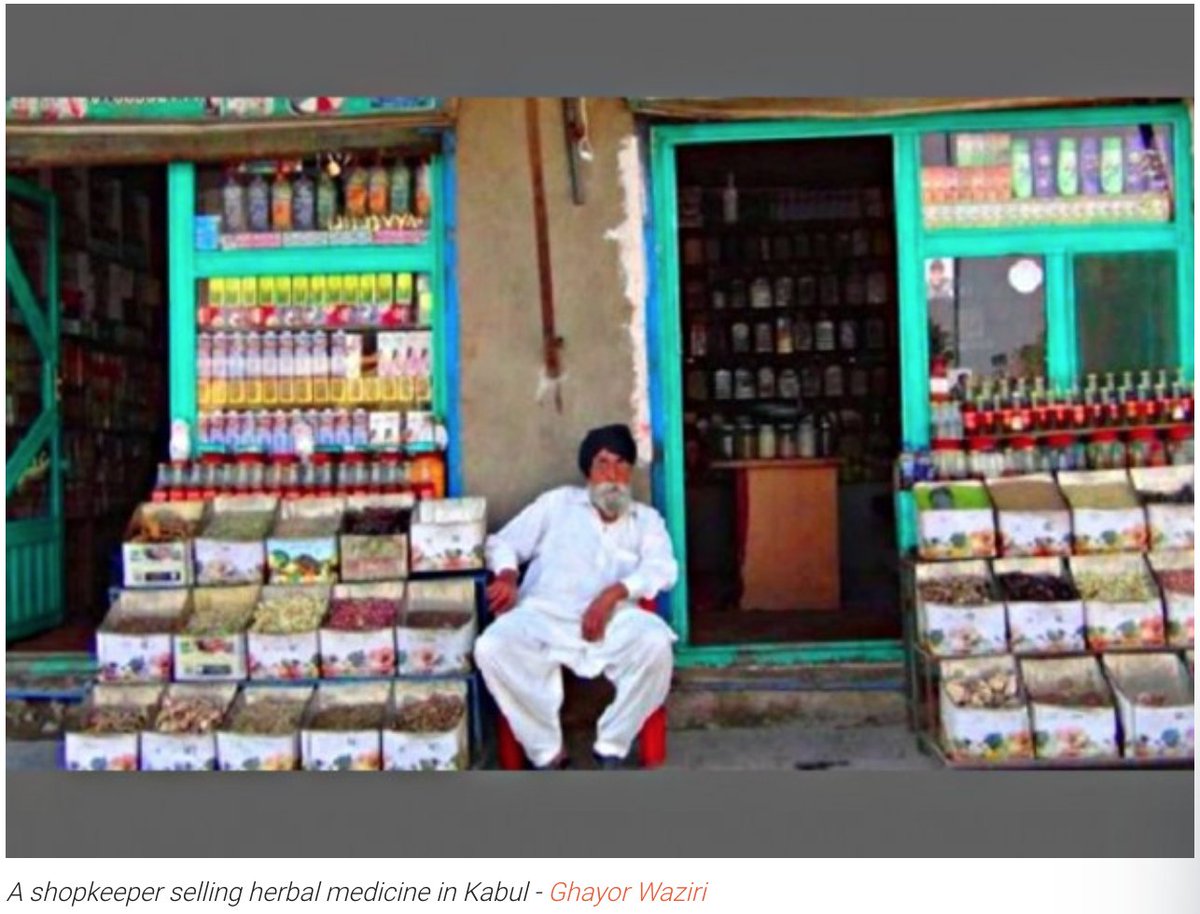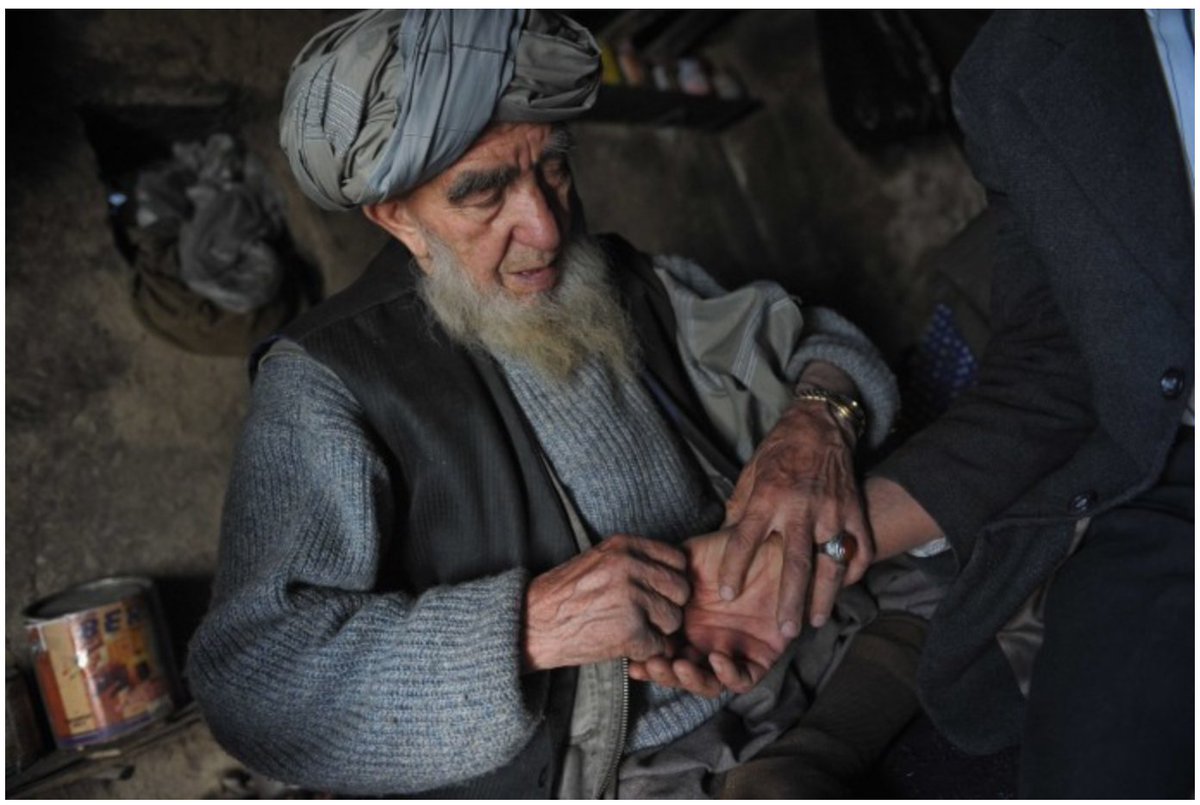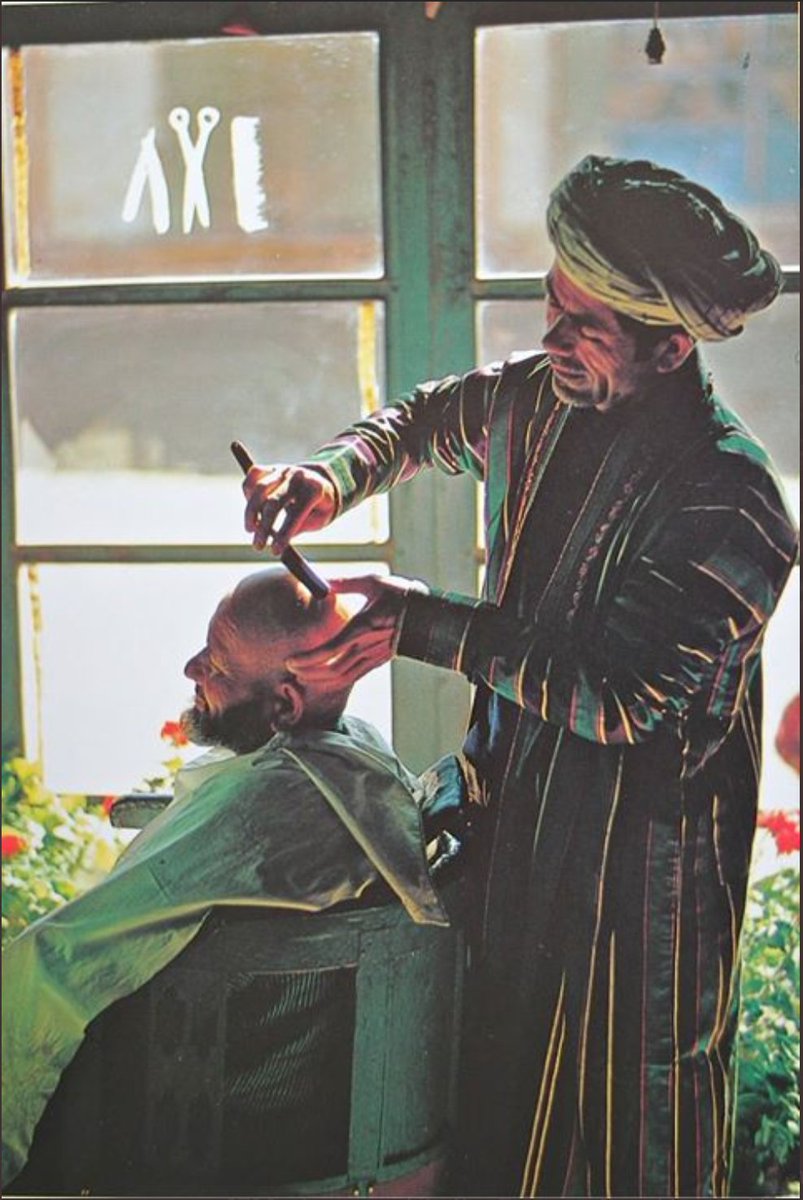This is a list of health care workers of #Traditional and #ancient medicine in Afghanistan. Before there were doctors, surgeons, nurses, pharmacists, dentists, and midwives, there were hakimjis, atars, dais, barbers, bonesetters, Mullahs & Sayyids, and shrines. MN @Mayysam
1. Dai (traditional birth attendants): Women with experience in helping with childbirth at home, usually older women who have witnessed many deliveries, have larned about the delivery and helping with the process. MN @Mayysam
Dais visit pregnant women before delivery and may distinguish normal or complicated pregnancies. They also visit women after the delivery to care for the newborn and offer advice and services. They were paid in goods household stocks (i.e. wheat, flour, potatoes, chicken) MN
2.Hakimji (ancient medicine practitioners): They have knowledge of #Unani medical traditions of India as well as those Greco-Arabic traditions of the West. Herbs are most often the medications they prescribe. MN @Mayysam
3.Atar: People who have knowledge of herbs and sell herbal medicine at village bazaar. Atars know the advantage of herbs and mixture of herbs with other material for certain health conditions. They are often paid only for their herbs, not their knowledge. MN @Mayysam
4.Bonesetters: As the name implies, they set bones, broken, dislocated or sprained. Bonesetters learn the techniques from their masters through apprenticeship. MN @Mayysam
5. Barber: Besides cutting hair, barbers pulled teeth and performed circumcision. It is also believed that they drew blood to release the ‘bad blood’. #bloodletter #bloodletting MN @Mayysam
6. Mullahs (Religious clerks including Sayyids): Mullahs provided services for mental disease and other health conditions related to evil spirits. Mullahs are also known to treat infertility in women and impotency in men. MN @Mayysam
o Mullahs treat illnesses through providing #Tawiz, an amulet consisting of verses from the Holy Koran that is worn around a patient’s neck or pinned to his/her cloth on the right shoulder.
o Mullahs usually work in shrines, a place where a pious person is buried. MN
o Mullahs usually work in shrines, a place where a pious person is buried. MN
As Western medicine found its space in rural Afghanistan, drug dispensers (pharmacists – compounder (کمپودر) and injectionists were the first addition to the traditional health providers. MN @Mayysam
Despite the dominance of modern (biomedical) medicine in the past half a century, the ancient and traditional medicine practices have remained in Afghanistan. MN @Mayysam
References for this thread: (Penkala-Gawęcka, 1985; 1988)
References for this thread: (Penkala-Gawęcka, 1985; 1988)
Refs: Penkala-Gawęcka, D. (1985). Two types of traditional medicine in Afghanistan. Ethnologia Polona, 11.
Penkala-Gawęcka, D. (1988). Medical pluralism in Afghanistan: Conflict between, coexistence or integration of various medical systems. S. Szynkiewicz, ed, 235-247.
Penkala-Gawęcka, D. (1988). Medical pluralism in Afghanistan: Conflict between, coexistence or integration of various medical systems. S. Szynkiewicz, ed, 235-247.

 Read on Twitter
Read on Twitter




